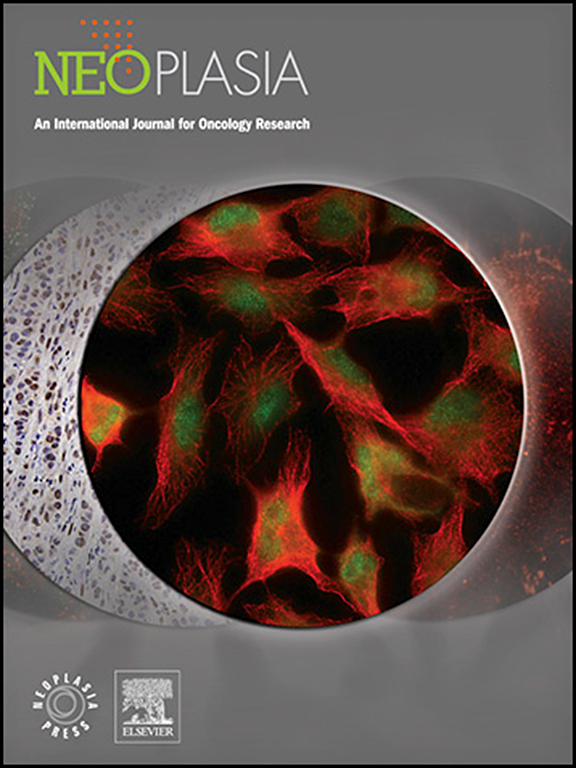Informatics strategies for early detection and risk mitigation in pancreatic cancer patients
IF 7.7
2区 医学
Q1 Biochemistry, Genetics and Molecular Biology
引用次数: 0
Abstract
This review provides a comprehensive overview of the current landscape in pancreatic cancer (PC) screening, diagnosis, and early detection. This emphasizes the need for targeted screening in high-risk groups, particularly those with familial predispositions and genetic mutations, such as BRCA1, BRCA2, and PALB2. This review highlights the sporadic nature of most PC cases and significant risk factors, including smoking, alcohol consumption, obesity, and diabetes. Advanced imaging techniques, such as Endoscopic Ultrasound (EUS) and Contrast-Enhanced Harmonic Imaging (CEH-EUS), have been discussed for their superior sensitivity in early detection. This review also explores the potential of novel biomarkers, including those found in body fluids, such as serum, plasma, urine, and bile, as well as the emerging role of liquid biopsy technologies in analyzing circulating tumor DNA (ctDNA), circulating tumor cells (CTCs), and exosomes. AI-driven approaches, such as those employed in Project Felix and CancerSEEK, have been highlighted for their potential to enhance early detection through deep learning and biomarker discovery. This review underscores the importance of universal genetic testing and the integration of AI with traditional diagnostic methods to improve outcomes in high-risk individuals. Additionally, this review points to future directions in PC diagnostics, including next-generation imaging, molecular biomarkers, and personalized medicine, aiming to overcome current diagnostic challenges and improve survival rates. Ultimately, the review advocates the adoption of informatics and AI-driven strategies to enhance early detection, reduce morbidity, and save lives in the fight against pancreatic cancer.
胰腺癌患者早期发现和风险缓解的信息学策略。
本文综述了胰腺癌(PC)筛查、诊断和早期检测的现状。这强调了对高危人群进行有针对性筛查的必要性,特别是那些有家族性易感性和基因突变的人群,如BRCA1、BRCA2和PALB2。本综述强调了大多数PC病例的散发性和重要的危险因素,包括吸烟、饮酒、肥胖和糖尿病。先进的成像技术,如内镜超声(EUS)和对比增强谐波成像(CEH-EUS),因其在早期检测方面的优越灵敏度而被讨论。本综述还探讨了新型生物标志物的潜力,包括那些在体液中发现的生物标志物,如血清、血浆、尿液和胆汁,以及液体活检技术在分析循环肿瘤DNA (ctDNA)、循环肿瘤细胞(CTCs)和外泌体中的新兴作用。人工智能驱动的方法,如Felix项目和CancerSEEK项目中使用的方法,因其通过深度学习和生物标志物发现提高早期检测的潜力而受到重视。这篇综述强调了通用基因检测和人工智能与传统诊断方法相结合对改善高危人群预后的重要性。此外,本综述指出了PC诊断的未来方向,包括下一代成像、分子生物标志物和个性化医疗,旨在克服当前的诊断挑战并提高生存率。最终,该综述倡导采用信息学和人工智能驱动的战略,以加强早期发现,降低发病率,并在抗击胰腺癌的斗争中挽救生命。
本文章由计算机程序翻译,如有差异,请以英文原文为准。
求助全文
约1分钟内获得全文
求助全文
来源期刊

Neoplasia
医学-肿瘤学
CiteScore
9.20
自引率
2.10%
发文量
82
审稿时长
26 days
期刊介绍:
Neoplasia publishes the results of novel investigations in all areas of oncology research. The title Neoplasia was chosen to convey the journal’s breadth, which encompasses the traditional disciplines of cancer research as well as emerging fields and interdisciplinary investigations. Neoplasia is interested in studies describing new molecular and genetic findings relating to the neoplastic phenotype and in laboratory and clinical studies demonstrating creative applications of advances in the basic sciences to risk assessment, prognostic indications, detection, diagnosis, and treatment. In addition to regular Research Reports, Neoplasia also publishes Reviews and Meeting Reports. Neoplasia is committed to ensuring a thorough, fair, and rapid review and publication schedule to further its mission of serving both the scientific and clinical communities by disseminating important data and ideas in cancer research.
 求助内容:
求助内容: 应助结果提醒方式:
应助结果提醒方式:


